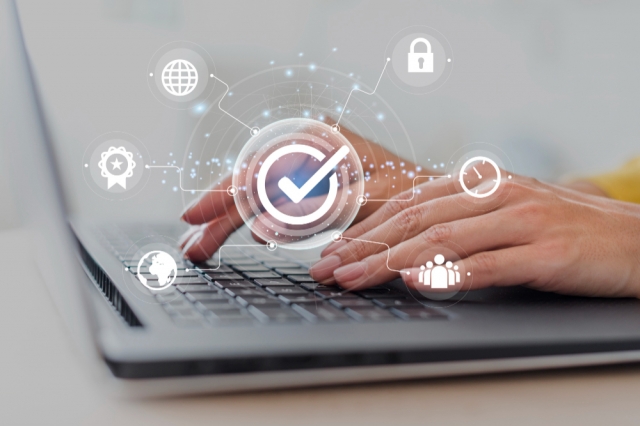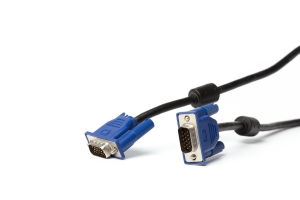Cyber threats are no longer limited to large corporations. Small businesses are increasingly becoming frequent targets due to their limited security measures, outdated systems, and smaller IT teams. A single cyberattack can cause significant damage, from financial loss and stolen data to regulatory penalties and lasting reputational harm. Despite this, many small business owners underestimate the importance of robust IT security, believing they are too small to be noticed by attackers.
In contrast, hackers often see small businesses as easy targets. That is why small business owners must understand the risks and take proactive steps to secure their digital operations. Fortunately, you do not need a massive budget to build strong protection. Many effective IT security services are scalable, affordable, and tailored specifically to meet the needs of small businesses. By choosing the right tools, you can protect your data, your customers, and your business's future. Interact with the Managed IT Services Los Angeles experts to identify the right IT security services that protect your small business from evolving cyber threats.
In this blog, we will explore IT security services and the top ten security services that can protect your operations.
What Are IT Security Services?
IT security services help protect a business's digital systems, data, and networks from cyber threats. These services help prevent unauthorized access, data breaches, malware attacks, and other security risks. They include tools such as firewalls, antivirus software, secure backups, and employee training. These services help businesses stay safe, compliant, and operational in an increasingly digital and threat-filled environment.
Top 10 IT Security Services Every Small Business Needs
-
Managed Firewall Services
A firewall is like a protective wall between your business network and the outside world. It filters both incoming and outgoing traffic, helping to block any suspicious content from getting through. Managed firewall services take this protection a step further. Instead of relying on someone in your office to manage settings or keep them up to date, professionals handle everything remotely.
They monitor traffic, apply updates, adjust rules, and respond to alerts so your network stays safe without requiring extra effort on your part. It's an innovative and efficient way to ensure your business network stays guarded 24/7.
-
Endpoint Protection and Antivirus
Every device connected to your network is a potential entry point for cyber threats. If one team member's laptop or mobile phone becomes infected, it could compromise your entire system. Endpoint protection adds a layer of defense to all those devices.
It doesn't just look for viruses; it also detects unusual behavior, isolates threats, and stops infections before they spread. No matter where your team works, this security keeps your programs and information safe. Your staff can work without problems.
-
Secure Email Protection
Email is one of the most common methods used by attackers to target businesses. A fake message can appear to be from a trusted source, but it may contain harmful links or infected attachments. Secure email protection helps filter out these risks before they reach your inbox. It automatically blocks spam, phishing attempts, and malware-infected files.
Some solutions even analyze links in real time and rewrite them to check their safety before anyone clicks. This means your team can use email confidently without constantly worrying about what might be hiding behind a message.
-
Data Backup and Disaster Recovery (DR)
Every business relies on data, whether it's customer records, invoices, reports, or files that support daily operations. But that data can be lost in an instant due to hardware failure, accidental deletion, or a ransomware attack. Data backup services make regular copies of your important files and store them securely, often in the cloud.
Disaster recovery ensures that you can retrieve your files quickly if something goes wrong. You can start working again promptly without a significant delay. Having both backup and recovery in place helps prevent data loss and costly downtime.
-
Multi-Factor Authentication (MFA)
Passwords can be guessed, stolen, or leaked, but multi-factor authentication makes it much harder for someone to break in. MFA adds an extra layer of protection by asking users to confirm their identity with something more than just a password.
This could be a one-time code sent to a mobile device, a fingerprint scan, or a prompt through an app. Even if a cybercriminal manages to obtain a password, they won't be able to bypass this second step. It's a straightforward way to enhance the security of your business accounts and systems.
-
Network Monitoring and Intrusion Detection
Your network is always active, with devices, applications, and users interacting throughout the day. Network monitoring helps keep an eye on all this activity to ensure nothing unusual or difficult is happening. If there's a sudden spike in traffic, a strange login attempt, or any kind of suspicious behavior, you get alerted right away.
Intrusion detection systems add a layer by analyzing patterns and identifying potential threats before they can cause harm. With these tools, you're not just reacting to problems; you're stopping them before they start.
-
Security Awareness Training
Even with the best technology in place, your employees still play a crucial role in maintaining your business's security. Many security issues happen because someone clicks the wrong link or uses a weak password. Security awareness training teaches your team how to recognize risks and avoid common threats.
It doesn't need to be complicated or time-consuming. Simple, clear training sessions help your staff develop smart habits that reduce the chances of mistakes. When your employees understand what to look out for, your overall security becomes much stronger.
-
Patch Management and Software Updates
Software needs regular updates to stay safe. Updates fix known issues that hackers can exploit. However, keeping everything up to date can be challenging when managing multiple systems and applications. Patch management services automate this process. They check for updates, test them if needed, and install them across your devices.
This keeps your systems secure without slowing things down or requiring manual checks. It also reduces the likelihood that someone will forget to update something important, which could leave your business vulnerable to attack.
-
Cloud Security Services
Using cloud tools has become a big part of how small businesses work today. Whether it's email, file storage, or collaboration apps, the cloud makes things more flexible and accessible. But just like your local systems, your cloud accounts need protection.
Cloud security services help manage access control, monitor for unusual activity, and ensure the security of sensitive information while it's being shared or stored. They also offer encryption and backup options to safeguard your cloud-based data, providing you with greater control and peace of mind.
-
Risk and Compliance Audits
Insight your business's security posture starts with a clear assessment. Risk and compliance audits help identify weaknesses in your systems and show where improvements are needed. They also ensure that you're following any applicable legal or industry-specific regulations related to data privacy and protection.
These audits provide a roadmap for strengthening your defenses and staying compliant. Instead of guessing what's working and what's not, you get a clear view of your security's current status and the following steps to take.
Final Words
Securing a small business doesn't have to be overwhelming or expensive. By combining managed firewalls, endpoint protection, cloud backups, email filtering, multi-factor authentication, staff training, and periodic risk assessments, you build a robust defense that stops most threats before they cause harm. These services protect your data, ensure daily operations run smoothly, and demonstrate to customers that you value their trust. Begin with the essentials that fit your current budget, review your risks often, and add new layers of protection as both your company and the threat landscape evolve.






